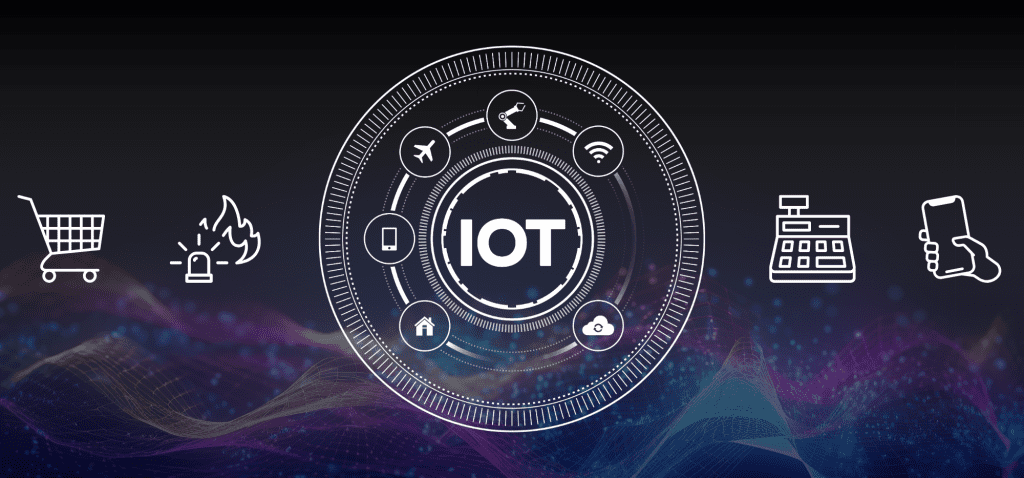3 Ways IoT (Internet of Things) Smart Devices Are Changing the Retail Industry


IoT (Internet of Things) has become ubiquitous in many commercial, industrial, and personal environments. Devices of all shapes, sizes, and purposes are centrally connected and exchange valuable data.
Over the last few decades, the centralisation of various IoT-enabled devices—many of which previously functioned separately—has turned traditional retail into smart retail.
From shopping habits to inventory and supply chain optimisation to capacity and footfall tracking, no stone is left unturned regarding IoT. All devices work seamlessly within one network to collect and collate valuable data, provide health and safety coverage, and enhance the layout of retail premises to improve the customer experience.
In this post, we’ll explore three use cases where IoT technology has substantially influenced retail businesses and what we can expect to see in the future.
Enhancing the Shopping Experience
Nowadays, it’s common practice for retailers to push promotions and product selections to opted-in customers, usually via e-mail or mobile apps. However, they can also ping their customers based on proximity, whether through an app or another phone-based service.
Many key players in the retail market use beacons and RFID technology to detect whether someone is within a specific vicinity of a shop, pushing a notification out to entice them to enter. To enhance the customer experience, this is sometimes tailored to their past purchases and pricing deals. Customers must have Bluetooth enabled and the correct mobile apps downloaded for this to work.
Amazon Go is a case study that highlights the true, maximised power of Internet of Things devices in the retail sector. As a prime example of beacon usage, Amazon Go offers a complete digital transformation of the traditional checkout dynamic. Customers can shop and leave without using a cashier or a self-checkout, a testament to the convenience and efficiency IoT brings to the retail experience.
Point of Sale (PoS) Terminals
Point of Sale (PoS) terminals are among the most essential tools in any retail setting. Not only do they process customer transactions, but they also connect to the cloud to store real-time data for inventory and sales information, helping streamline operations.
The term ‘PoS’ doesn’t solely refer to tills manned by in-store shop staff—it includes any system within a shop that can process transactions, from self-serve checkouts to vending machines.
In today’s volatile retail environment, compiling up-to-date statistics and data is essential to staying ahead of the curve and promoting growth. For larger multi-site retailers, these performance stats provide valuable corporate and shop-level decision-making insights.
Inventory Management
Any good shop will always keep its shelves stocked. However, a great shop will look beyond the shelves by strategising seemingly benign processes like product positioning, supply chain management, and, more recently, omnichannel experiences like click-and-collect to diversify consumption and improve customer engagement.
Retail companies use a variety of IoT solutions to manage inventory, ensuring that every product is accounted for. For example, certain products may need to be stored at specific temperatures. IoT sensors can monitor the performance of the equipment facilitating these conditions, like refrigerators and freezers, to ensure they operate as intended and detect any maintenance issues.
Outside of temperature and equipment maintenance, retailers can implement solutions that detect low stock, identify congestive and quiet parts of the store layout, and catch shoplifters whose theft tampers with inventory levels. The devices powering these can range from as simple as a CCTV camera to sensor-equipped smart shelves and footfall trackers, often collecting essential customer data.
It’s becoming increasingly common for retailers to use devices to track, scan, and verify click-and-collect purchases using computers or smartphones. These devices usually connect to a company-wide database, keeping track of orders across all applicable locations.
Regardless of sophistication, all these solutions use IoT applications to connect centrally. It’s the catalyst driving nearly every intelligent solution across the retail industry.
What to Expect in the Future
As devices become ever more connected, both within and outside shops, it’s worth considering an important question – what’s next for retail stores?
AI (Artificial Intelligence) has become a focal point across many industries. For retail, this might continue to power tailored customer recommendations, make self-serve terminals more hands-free, and drive automation and data-driven solutions across retail environments using advanced data analytics to provide valuable insights. The possibilities for machine learning and predictive maintenance to enhance operational efficiency are endless.
In other areas, advancements could be expected in beacon usage, as well as more advanced sensors and cameras that track specific things like queue length and shop layouts.
In this age, retailers must continue innovating to protect their space in competitive high streets nationwide to enhance customer satisfaction in-store. IoT devices will continue to power these solutions. From smart shelves that provide real-time stock updates to advanced inventory management systems designed for restocking and optimising supply chains, IoT devices are integral to keeping shelves stocked and customers satisfied.
How Iotie can help you
To stay competitive today, it’s essential to continue leveraging the latest technological advancements, such as Web 4.0. At Iotie, we simplify this process for you.
We provide mobile connectivity in over 150 countries, all from a single SIM card. We help support your continued growth, operational efficiency, and innovation by ensuring your people, places, machines, and data seamlessly connect through IoT. You can trust us to ensure your business stays ahead of the curve.


